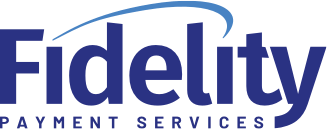The Do’s and Don’ts of Processing Credit Cards
Always have enough funds in your bank
account to cover processing fees

If a bank fee or charge to your merchant account is ever returned for insufficient funds, the processing bank will become concerned. Their reasoning is that if you don’t have coverage for a small fee, you may not be able to recover from a large chargeback.
Don’t round off large sales to even amounts
In some industries, larger sales that have even dollar amounts can trigger a red flag and should be avoided unless the typical sale of that item actually does reflect that amount. For example, if the sale amount is $35,034.26, don’t round it off to $35,000.
Don’t try to recharge a declined transaction multiple times
If a transaction is declined, don’t retry the card multiple times for lesser amounts in the hope of finding an amount that is available on the card. The bank may flag you as trying to trick the system. Even worse, it is possible that even if you do get the transaction to finally go through, the transaction will technically be invalid since it goes against bankcard association rules; and if the charges are ever reversed, you may lose the money. If a transaction is declined, the best response is to ask your customer to provide an alternate form of payment.
Make sure all charges match the terms of the invoice
Here are a few ways you can make sure your transactions and invoices are consistent:
Don’t break up sales without corresponding invoices
Banks expect charges to be reflected by the actual amounts of the invoice. For example, if you have an invoice for $200, do not charge $100 twice, unless the invoice explicitly says that the terms are in two installments.
Invoices must be recent
If the terms are net 30, don’t charge the card after 90 days. Banks consider this to be a “debt collection,” which can never be paid with a credit card.

Never charge your own credit cards
This includes all family members. A business owner or company stakeholder may never swipe a card that belongs to them—even if they are an additional user on someone else’s card—in their business. The reason is that a merchant account is to be used only to purchase goods or services from the business. This type of “cash advance” (typically done to accumulate points or rewards) is prohibited by card association rules.
If a merchant is caught using a card in this manner, they risk having the charge reversed and their account terminated. Although a merchant may have a legitimate reason for using their own card—such as if the signer for a charity wants to make a donation, or someone with multiple businesses authorizes a sale from one business to the other—the card associations do not permit it.
Never charge a card for loans
If someone owes you money on a loan, never accept payment by charging their card. Credit cards are to be used for legitimate purchases only, and loan payback is never allowed.
Use your account in the way it was intended
If you deviate from what’s expected for your account, you’re likely to get noticed by the bank. Here are a few best practices:
- Only charge for items that fit the industry for which you were set up.
- Charge for amounts that are consistent with the industry you are in (e.g., a grocery or convenience store should not have a charge of $5000).
- If you were set up as a “card-present” account, you should not be keying in the majority of your sales.
Notify Fidelity in advance of an anticipated significant increase in sales or volume
If you expect a drastic increase in transaction volume or amounts, notify us in advance. If you run a promotion or experience a seasonal spike, for example, we will notify the bank to expect an increase. If they are not expecting it, the bank may flag your account for suspicious activity.
Avoid repeatedly charging the same card number
In some instances, this may generate a red flag by banks.
Do NOT accept third-party cards from customers
Purchases should be paid for by the entity named on the invoice. You should only accept the customer’s credit card or their company’s card, and never accept a “borrowed” card that does not belong to the customer. This is common in some industries when, for example, a customer makes a purchase on behalf of their client using the client’s card. If the actual cardholder initiates a chargeback, you will not be protected.
